Filter by

Abrasive Technology
The subject matter of this book is the information on the abrasive technology methods, the characteristics of the methods (for example, the technological parameters, tools, and machines), innovative methods, characteristics of surface structure and surface properties after this type of mechanical process, and application in various industrial branches and other technical and technological domai…
- Edition
- -
- ISBN/ISSN
- 9781838816803
- Collation
- oer.unej.ac.id
- Series Title
- -
- Call Number
- -

Today's TBB Today's TBB = C++ Parallel Programming with Threading Building B…
This open-access book serves as a comprehensive guide for C++ programmers looking to master Threading Building Blocks (TBB). Authored by two experts in TBB and parallel programming, the book distills decades of collective experience in developing and teaching parallel programming concepts, presenting insights in a clear and accessible manner. Today’s TBB starts with foundational principles, …
- Edition
- -
- ISBN/ISSN
- 9798868812705
- Collation
- LXXI, 447 hlm,: ill, lamp; 21 cm
- Series Title
- -
- Call Number
- -
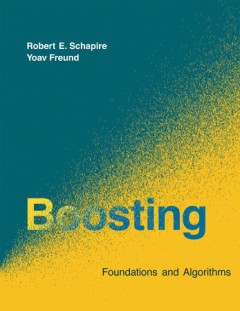
Boosting: Foundations and Algorithms
A remarkably rich theory has evolved around boosting, with connections to a range of topics including statistics, game theory, convex optimization, and information geometry. Boosting algorithms have also enjoyed practical success in such fields as biology, vision, and speech processing. At various times in its history, boosting has been perceived as mysterious, controversial, even paradoxical. …
- Edition
- -
- ISBN/ISSN
- 9780262301183
- Collation
- 1 online resource (xv, 526 pages) :illustrations
- Series Title
- -
- Call Number
- -

Genetic programming 1996 : Proceedings of the First Annual Conference, July 2…
Genetic programming is a domain-independent method for automatic programming that evolves computer programs that solve, or approximately solve, problems. Starting with a primordial ooze of thousands of randomly created computer programs composed of functions and terminals appropriate to a problem, a population of programs is progressively evolved over many generations using the Darwinian princi…
- Edition
- -
- ISBN/ISSN
- 9780262315876
- Collation
- 1 online resource (xviii, 568 pages) : illustrations.
- Series Title
- -
- Call Number
- 005 GEN
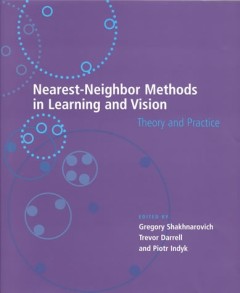
Nearest-neighbor methods in learning and vision :theory and practice
" ... held in Whistler, British Columbia ... annual conference on Neural Information Processing Systems (NIPS) in December 2003"--Preface.Regression and classification methods based on similarity of the input to stored examples have not been widely used in applications involving very large sets of high-dimensional data. Recent advances in computational geometry and machine learning, however, ma…
- Edition
- -
- ISBN/ISSN
- 9780262256957
- Collation
- 1 online resource (vi, 252 pages) :illustrations.
- Series Title
- -
- Call Number
- -

Algorithms
In the tradition of Real World Algorithms: A Beginner's Guide, Panos Louridas is back to introduce algorithms in an accessible manner, utilizing various examples to explain not just what algorithms are but how they work. Digital technology runs on algorithms, sets of instructions that describe how to do something efficiently. Application areas range from search engines to tournament scheduling,…
- Edition
- -
- ISBN/ISSN
- 9780262358675
- Collation
- 1 online resource
- Series Title
- -
- Call Number
- -
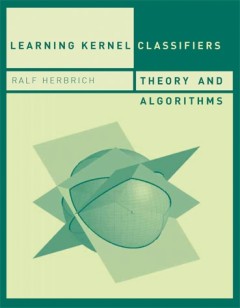
Learning Kernel Classifiers: Theory and Algorithms
Linear classifiers in kernel spaces have emerged as a major topic within the field of machine learning. The kernel technique takes the linear classifier--a limited, but well-established and comprehensively studied model--and extends its applicability to a wide range of nonlinear pattern-recognition tasks such as natural language processing, machine vision, and biological sequence analysis. This…
- Edition
- 1
- ISBN/ISSN
- 9780262256339
- Collation
- -
- Series Title
- -
- Call Number
- -
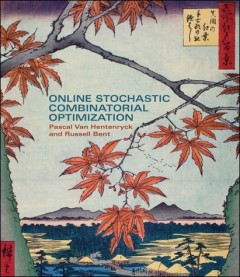
Online stochastic combinatorial optimization
"Online decision making under uncertainty and time constraints represents one of the most challenging problems for robust intelligent agents. In an increasingly dynamic, interconnected, and real-time world, intelligent systems must adapt dynamically to uncertainties, update existing plans to accommodate new requests and events, and produce high-quality decisions under severe time constraints. S…
- Edition
- -
- ISBN/ISSN
- 9780262257152
- Collation
- 1 online resource (xiii, 232 pages) :illustrations
- Series Title
- -
- Call Number
- -
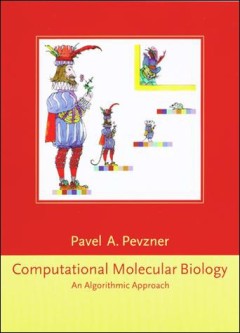
Computational Molecular Biology: An Algorithmic Approach
In one of the first major texts in the emerging field of computational molecular biology, Pavel Pevzner covers a broad range of algorithmic and combinatorial topics and shows how they are connected to molecular biology and to biotechnology. The book has a substantial "computational biology without formulas" component that presents the biological and computational ideas in a relatively simple ma…
- Edition
- -
- ISBN/ISSN
- 9780262281522
- Collation
- 1 online resource (xviii, 314 pages).
- Series Title
- -
- Call Number
- -

Parallel Algorithms for Regular Architectures :Meshes and Pyramids.
AnnotationOCLC-licensed vendor bibliographic record.
- Edition
- -
- ISBN/ISSN
- 9780262279833
- Collation
- 1 online resource (336 pages)
- Series Title
- -
- Call Number
- -
 Computer Science, Information & General Works
Computer Science, Information & General Works  Philosophy & Psychology
Philosophy & Psychology  Religion
Religion  Social Sciences
Social Sciences  Language
Language  Pure Science
Pure Science  Applied Sciences
Applied Sciences  Art & Recreation
Art & Recreation  Literature
Literature  History & Geography
History & Geography